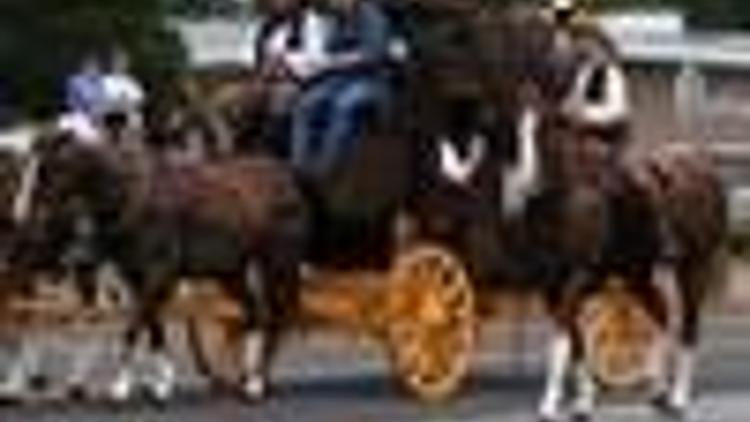Texas hills marry cowboy boots, cuisine
Güncelleme Tarihi:

FREDERICKSBURG, TEXAS - About 80 kilometers south of Fredericksburg, in Bandera, dude ranches have been operating since 1920. The self-proclaimed 'Cowboy Capital of the World' is home to seven dude ranches, where guests can take trail rides and eat cowboy fare
The Texas Hill Country, where tiny towns dot a landscape of wildflowers and cedar trees, is the kind of place where cowboys and sommeliers meet. Sometimes literally.
Dude ranches and country dance halls sit alongside wineries and haute cuisine. A hard morning on horseback can be followed by an afternoon of wine and cheese. And nobody minds a bit.
Ask Brandon Stowe. The 24-year-old in cowboy boots was swirling and sipping samples of wine here recently while in town for a wedding, but he and his hunting buddies often stop at a winery to pick up their favorite vintage at the end a day of hunting in the Hill Country.
"It's hard to imagine six guys who have been hunting all day going to a winery, but we do," he said, glass in hand in the cellar-like tasting room of the Torre di Pietra winery.
The Hill Country doesn't just sit culturally at the intersection of cowboy and urbane; it sits there geographically, too. Most of the region's attractions are within an hour's drive of Austin, the state's hipster capital, and San Antonio, home of the Alamo.
And in a state where a drive between cities can be derriere-numbingly long, the Hill Country provides easy stops in a short distance.
"People are starting to hear about it and starting to understand that they are day trips that you can take," said Debbie Harmsen, lead editor of new Fodor's guides for Texas and for San Antonio, Austin and the Hill Country. "It's an area of the state that is overlooked, but it's one of its gems."
There are 22 wineries in the Hill Country, seven around Fredericksburg alone, with two more slated to open soon. Texas is now the nation's fifth largest wine-producing state.
It's "surprising to a lot of national media folks and consumers as a whole. They don't associate wine with Texas," said Ernie Loeffler, director of the Fredericksburg Convention and Visitors Bureau. "It's like, 'You have what in Texas?!"'
The Mediterranean climate is conducive to growing grapes, attracting dozens of new vintners in the last several decades. Those vintners, with tasting rooms ranging from basic setups to villa-like showpieces, are attracting tourists and higher-end restaurants to a region already popular for its cowboy culture and outdoor activities.
From new ones to connoisseurs
The wineries clustered together complement each other by sparing visitors long drives between stops, said Ken Maxwell, a former semiconductor executive who started Torre di Pietra in 2004.
Visitors range from new wine drinkers to experienced connoisseurs, he said.
They come from all over the world, but Maxwell notes one consistent demographic: most are women.
"Seventy to 75 percent of my customers are ladies. Guys are a little slow, but sooner or later, they'll follow the ladies," he jokes.
The explosive growth of wineries adds a kind of urbane bent to the region's long popular outdoor activities, including river tubing and horseback riding.
About 50 miles (80 kilometers) south of Fredericksburg, in Bandera, dude ranches have been operating since 1920. The self-proclaimed "Cowboy Capital of the World" is home to seven dude ranches, where guests can take trail rides and eat cowboy fare.
Clay Conoly and his wife run the Dixie Dude Ranch, a 725-acre (293-hectare) spread that started hosting cityfolk in 1937 when Conoly's great-grandfather was in charge.
Guests ranging from urban Texans to international travelers interested in experiencing the American West stay in the duplex cabins at the ranch all year round.
Twice-a-day horseback rides begin near a century-old graying wood barn - "the most photographed barn in Texas," Conoly chuckles.
There are hiking trails and other outdoor activities, and lots of room for children to roam.
The ranch also has a heated pool and massage treatment available, for those who find the saddle soreness of ranch life a little too authentic. �

